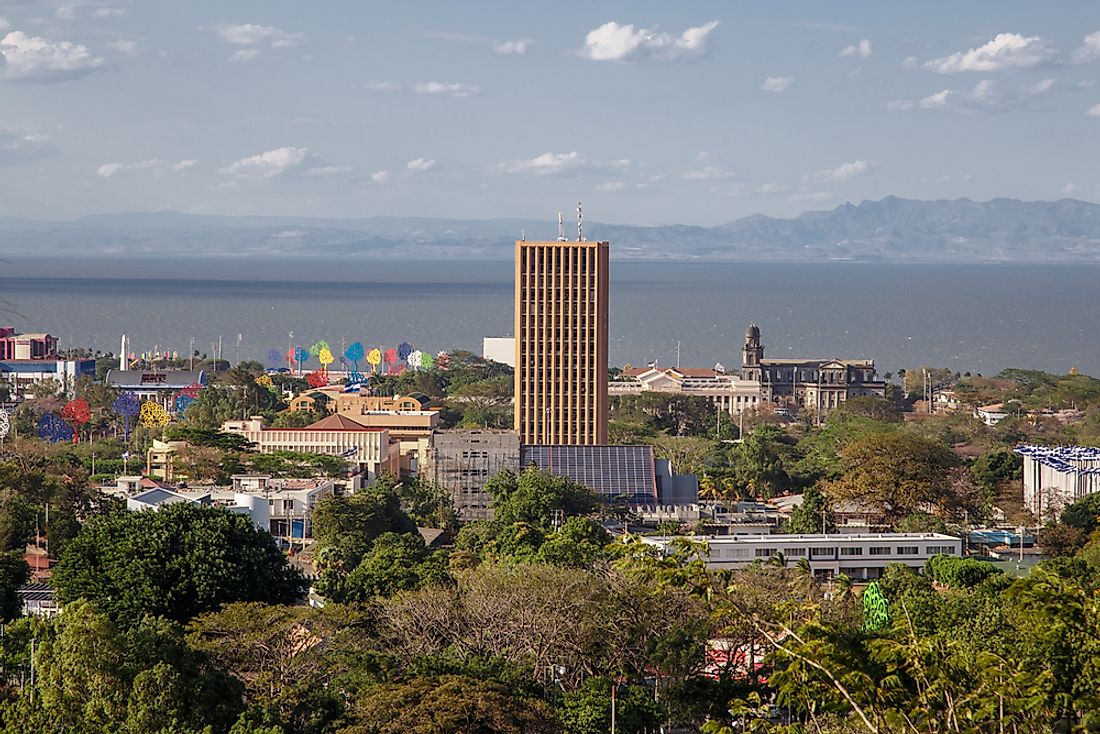What Is The Capital Of Nicaragua?

Located on Lake Managua’s southwestern shores, Managua is the capital and the most populated city in Nicaragua. It also serves as the capital of the Managua Department of the country. As of 2015, the city houses a population of 1,048,134.
How Did Managua Become The Capital Of Nicaragua?
The history of human habitation in the area that is now the thriving capital of Nicaragua is as old as 2,100 years. Other evidence of human habitation like statues and ceramic ware have also been discovered in the region.
The modern settlement of Managua initially began as a small fishing town in the pre-Columbian era. In 1819, the town was incorporated as a city. After Nicaragua attained independence in 1838, the selection of the independent nation’s capital city became an important task for the country’s leaders. Since Managua was found to be located strategically between the two cities of Granada and León, both former capitals of Nicaragua, Managua was chosen to serve as Nicaragua’s capital city in 1852.
The Progress Of Managua Since 1852
As the capital of independent Nicaragua, Managua experienced a rapid rate of urbanization and quickly became the chief political, commercial, and educational hub of the country. However, the progress of the city was slowed down several times due to natural disasters like the 1876 and 1885 floods, the 1931 earthquake, a raging fire in 1936, and another major earthquake in 1972. The 1972 earthquake caused a huge loss of property in the city and killed over 19,120 people. The corruption prevailing within the ruling Somoza regime at that time further added fuel to fire and dampened rescue and rebuilding efforts in Managua. This period of downfall in Managua was followed by the 1979 Nicaraguan Revolution, the 1980’s Contra War, and several natural disasters including the 1998 Hurricane Mitch.
The rebuilding of Nicaragua began only after the National Opposition Union came to power in 1990. The city once more started to flourish and this saga continued after the SNLF came back to power in 2006. The city is presently developing rapidly with newer and advanced infrastructure being added with each passing year.
The Economy Of Managua
Managua serves as the economic hub of Nicaragua. The city houses the headquarters of some of the leading national and international businesses operating in the country. Several leading banks of Nicaragua are also active in the city. Many factories operate in the city with beer, textiles construction products, shoes, etc., being the major manufactured goods. Cotton, coffee, and beef are some of the top goods exported from Nicaragua’s capital city. Several multi-national companies like Wal-Mart, Parmalar, and more also have their offices here. The capital city of Nicaragua also hosts four modern shopping malls and several world-class hotels.
Climate Of Managua
The capital of Nicaragua experiences a tropical climate with very little variances in temperature. The climate of the city can be described as tropical wet and dry. November to April is the dry season and the wet season prevails between May and October. March to May are the hottest months in Managua. The average temperature experienced in the city ranges between 28 and 32 °C.
Attractions In Managua
The capital of Nicaragua features both natural and man-made attractions. Crater lakes within the city limits and a great diversity of flora beautify the city. The man-made attractions here include the historic center of Plaza de la Revolución, the Catedral de Santiago, the country’s most notable theater named Rubén Darío National Theatre, the National Palace, Doctor Roberto Incer Barquero Library, the Museum of Acahualinca, and several other notable buildings, museums, cultural and sports venues. Managua also celebrates various religious and cultural festivals throughout the year that draws crowds to the city throughout the year.
Transport Infrastructure In Managua
Managua is well-connected by roads to the other major cities and towns of Nicaragua and also to the neighboring nations. The city also has a well-developed public transport network for traveling within the city. The city is also served by 36 bus routes and an international bus company that connects Managua to several cities in Central America. Taxis are also a popular means of communication in the city and are the preferred mode of travel for the city’s tourists. There are no railway networks in the city or even the country as a whole. The Augusto C. Sandino International Airport, the country’s only international airport is located in Managua.







